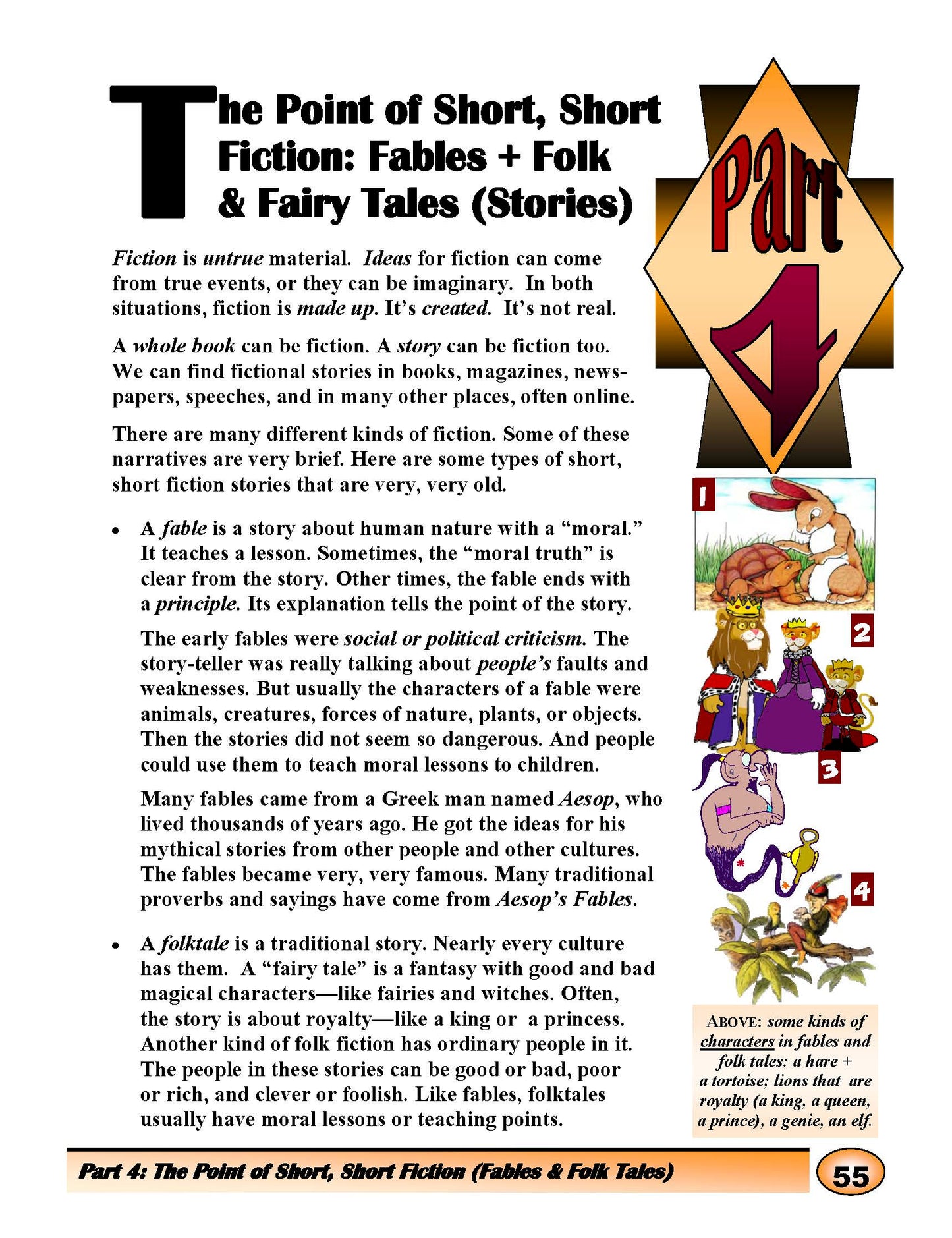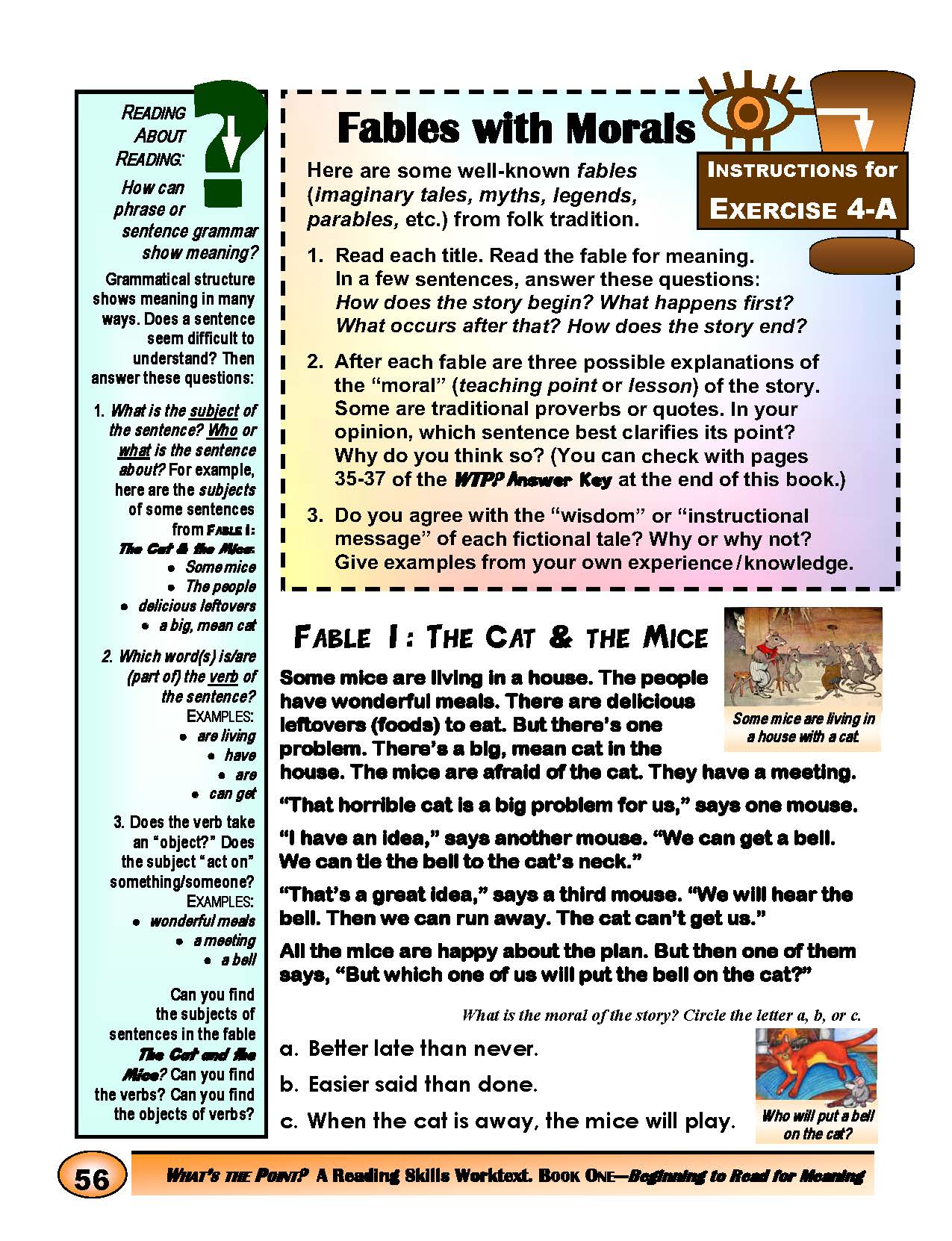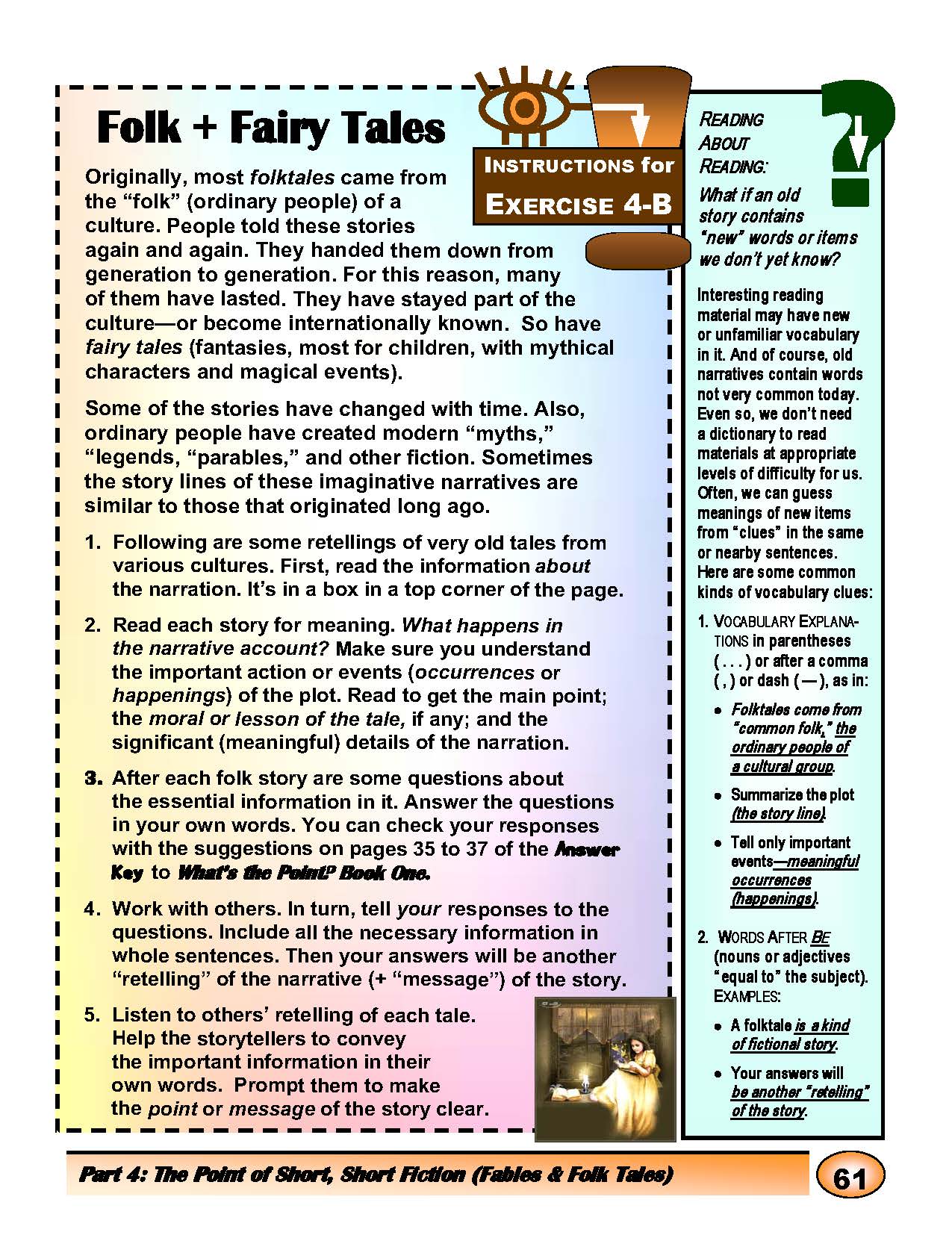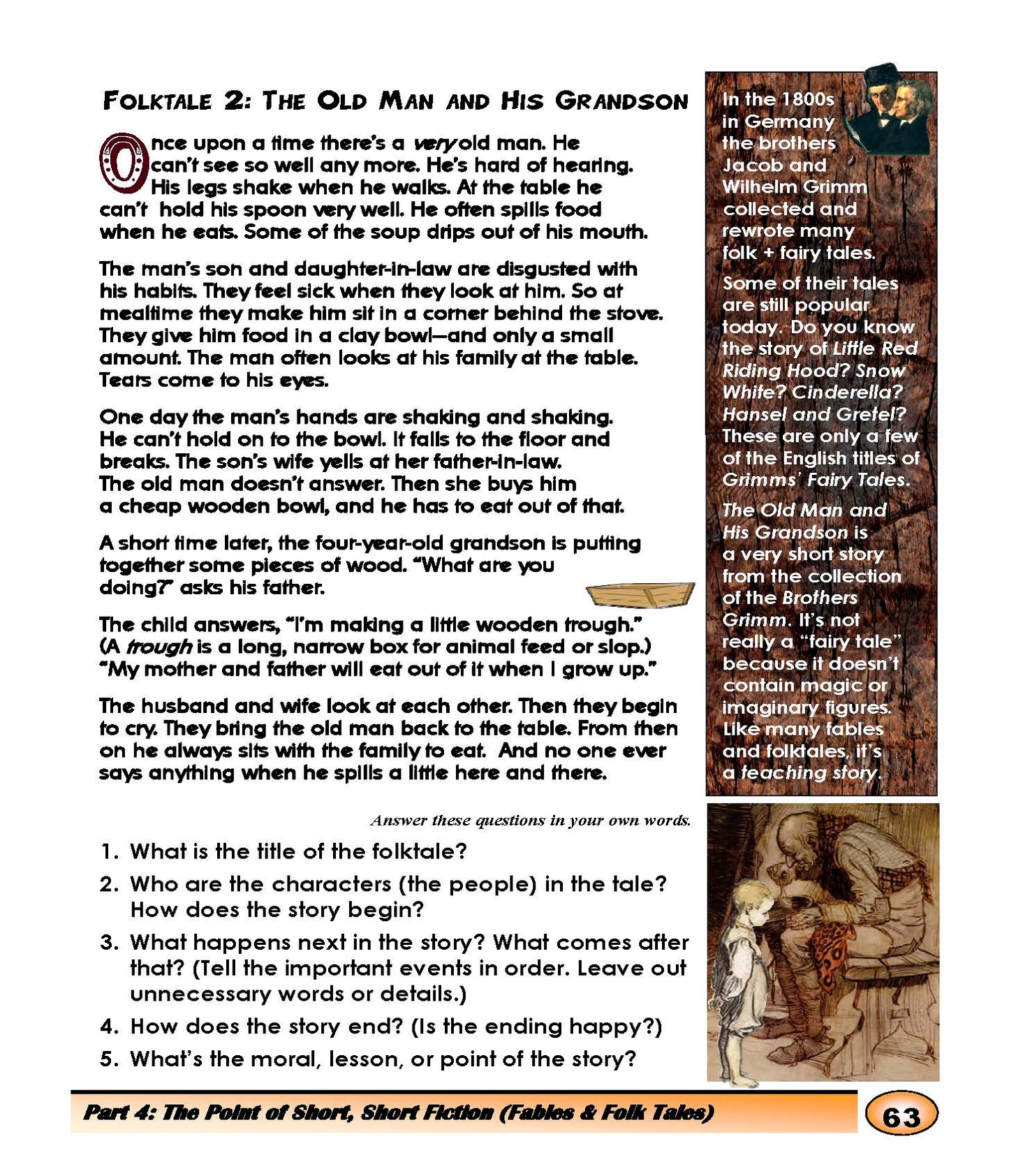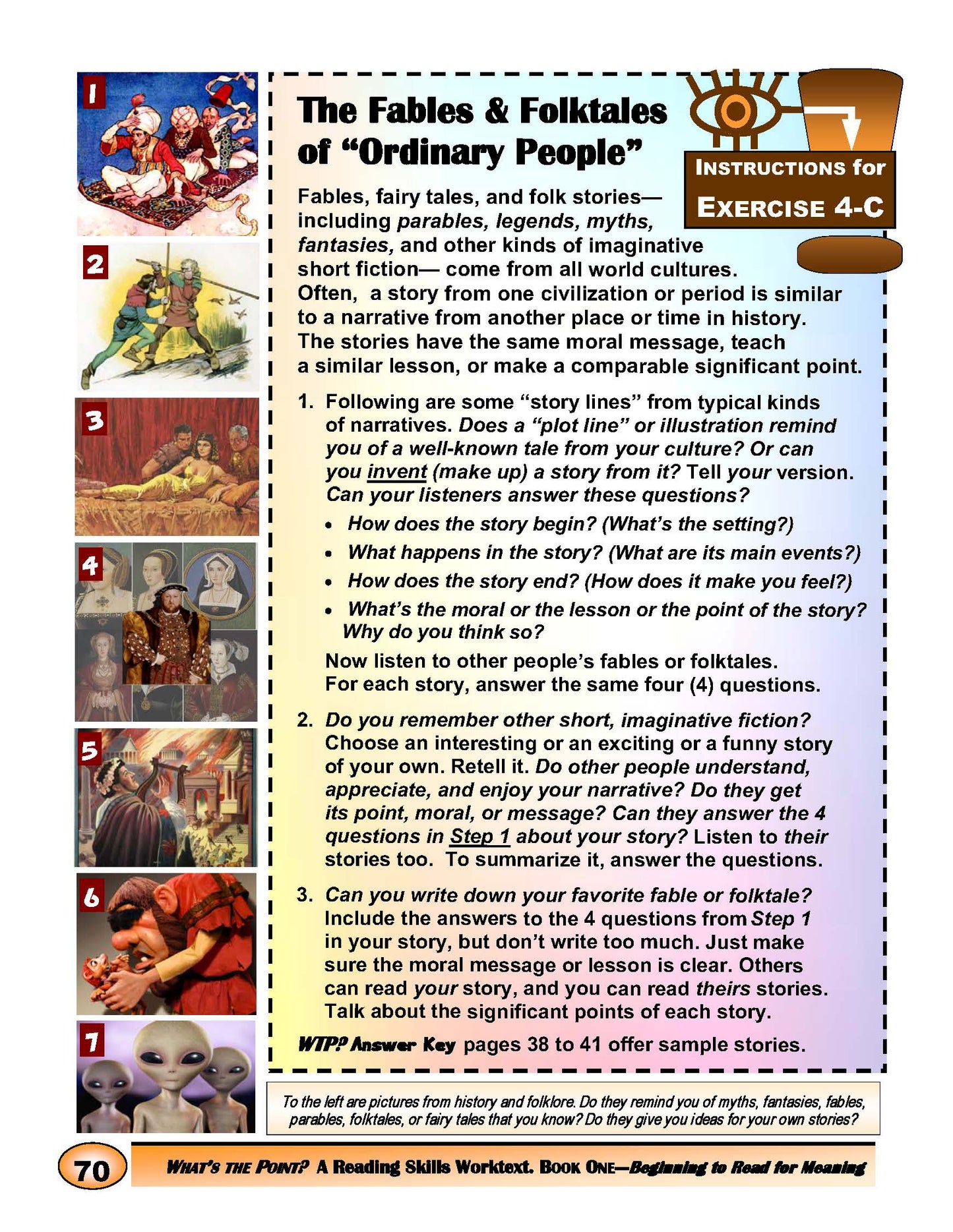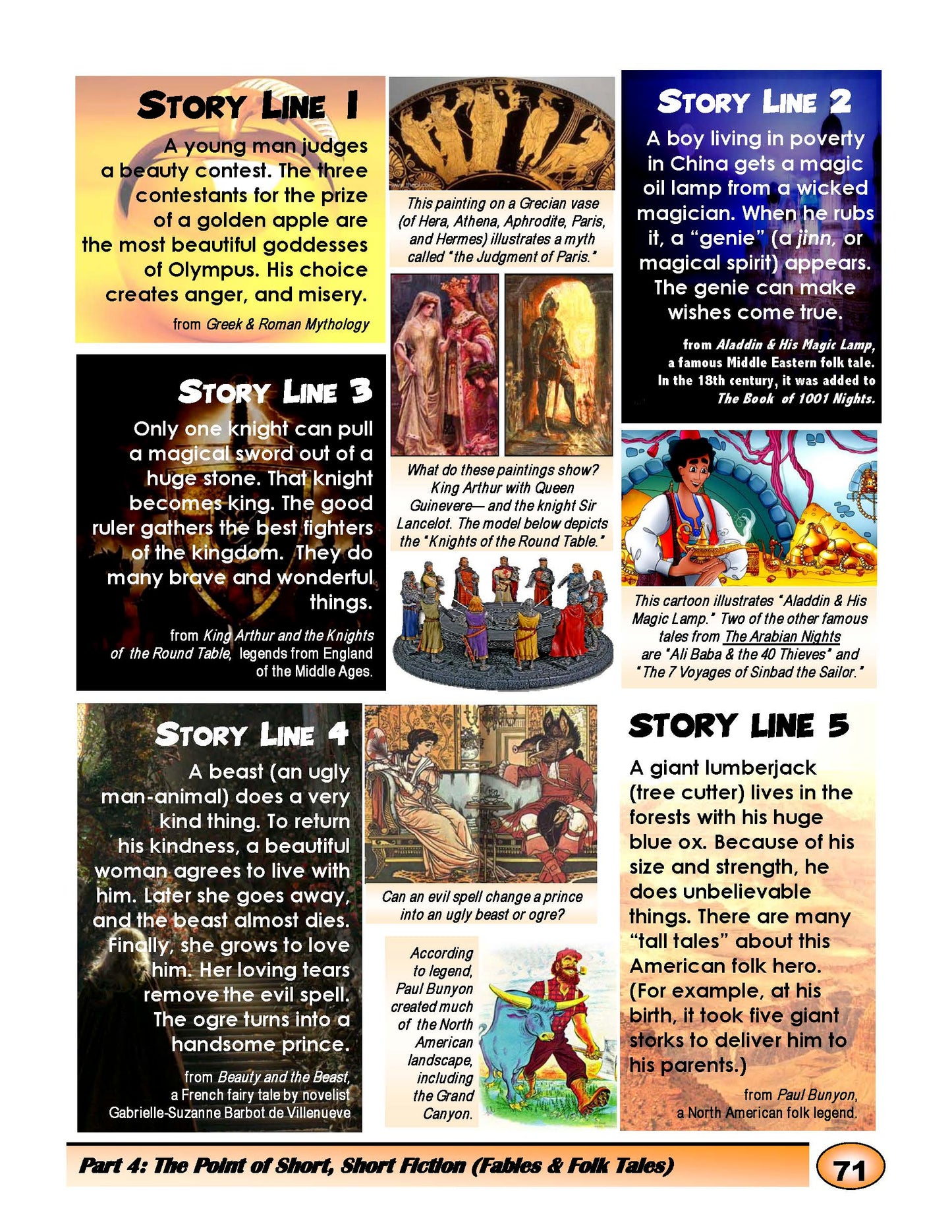1
/
of
6
Work/Life English
F-07.08 While Enjoying their Stories, Get Messages & Supporting Details of Fables with Morals & Folks/Fairy Tales
F-07.08 While Enjoying their Stories, Get Messages & Supporting Details of Fables with Morals & Folks/Fairy Tales
Regular price
$5.00 USD
Regular price
Sale price
$5.00 USD
Unit price
/
per
The Point of Short, Short Fiction: Fables & Folk & Fairy Tales (Stories),” pages 55-72 of What’s the Point? Book One: Beginning to Read for Meaning. Part 4
18 Pages
Who It’s For: Teachers & Students of Fiction Reading & Writing; Readers & Others Attracted by Familiar Fables, Folk & Fairy Tales, & Other “Teaching Stories” from World Cultures; Fiction Writers
Why You Need It: As an intro to the story lines of modern fiction, it’s instructive and enjoyable to hear, see, and read (versions of) the short classics that have endured for centuries. Engagement in universal plots (story lines) furthers cultural literacy and humanizing connections with others. It also helps readers with self-expression.
What You’ll / They’ll Do:
[1] Look over the 18-page Part 4: The Point of Short Fiction. Decide what you want to focus on: Fables with Morals; Folk Tales; and/or the Value of (Children’s or Instructional) Fiction (Fantasy, Myth, Parable, etc.) in Human Relations. Alternatively, cover all sections of the download equally, letting their story features “take you away” in your imagination whenever you feel the impulse.
[2] Read explanations. Look at activity instructions. Read the answers to questions in Sidebars that interest you. Before reading (aloud) 16 brief tales and sharing them with others, get into the “spirit” of this kind of fiction.
[3] Improve your sentence– and paragraph-level reading skills with the text of the narratives + their comprehension questions. Take pleasure in them! If it bolsters your confidence, focus attention on the language of the tales—how their sentences are constructed and how they fit together into streaming accounts of events. Easily guess meaning of vocabulary in context—without interrupting the flow of engaging story reading or telling.
[4] Peruse 10 other common plot lines from world history and cultures. Use them to recall and retell favorite stories from your past or (individual) background. When thinking or talking about the stories, (re-)collect wording of your own that well expresses the significant points, messages, events, details, and dialog.
[5] Get more input on these topics from corresponding pages in F-07.16, the What’s the Point? Book One Answer Key.
Couldn't load pickup availability
